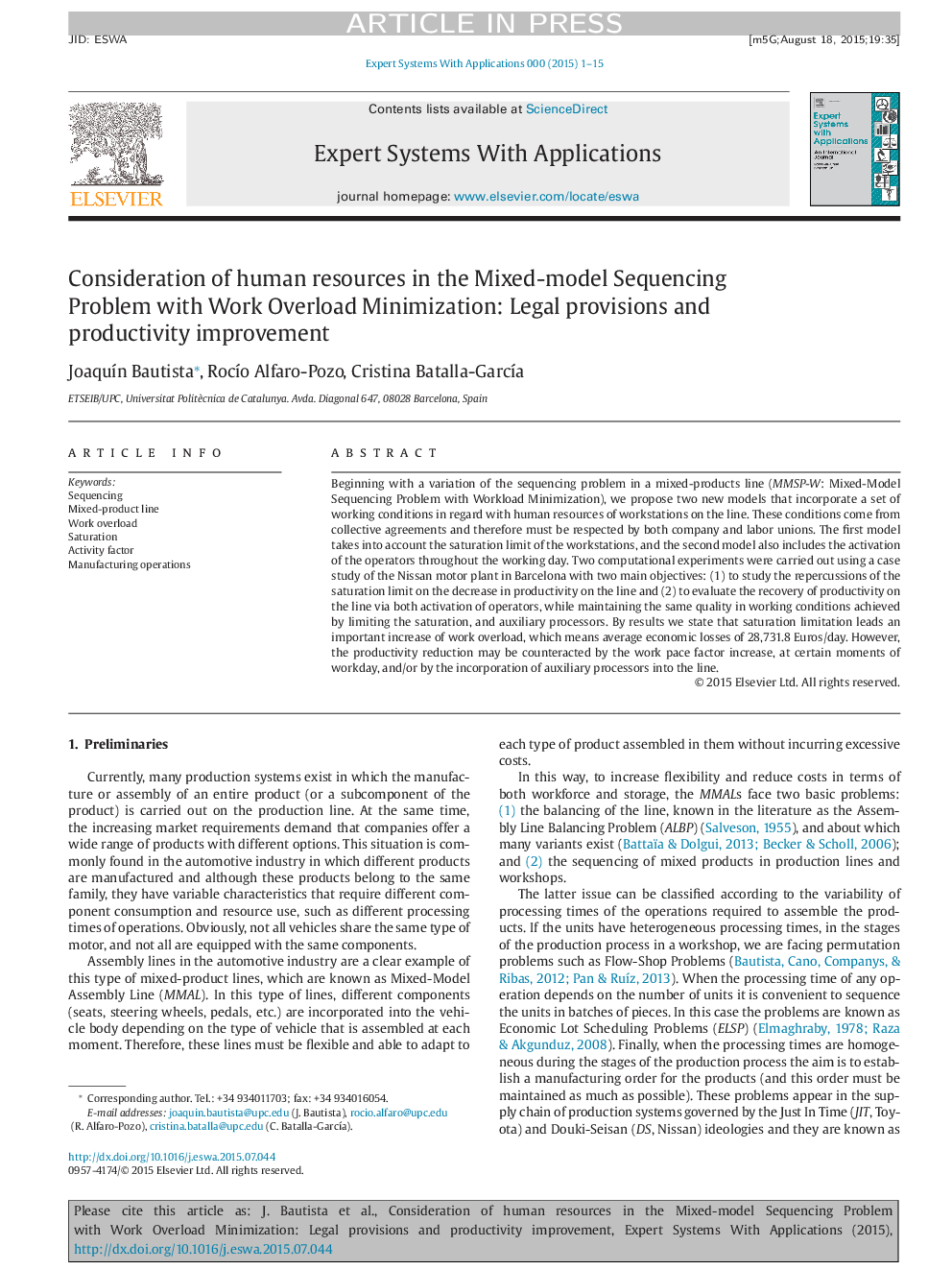| Article ID | Journal | Published Year | Pages | File Type |
|---|---|---|---|---|
| 10321799 | Expert Systems with Applications | 2015 | 15 Pages |
Abstract
Beginning with a variation of the sequencing problem in a mixed-products line (MMSP-W: Mixed-Model Sequencing Problem with Workload Minimization), we propose two new models that incorporate a set of working conditions in regard with human resources of workstations on the line. These conditions come from collective agreements and therefore must be respected by both company and labor unions. The first model takes into account the saturation limit of the workstations, and the second model also includes the activation of the operators throughout the working day. Two computational experiments were carried out using a case study of the Nissan motor plant in Barcelona with two main objectives: (1) to study the repercussions of the saturation limit on the decrease in productivity on the line and (2) to evaluate the recovery of productivity on the line via both activation of operators, while maintaining the same quality in working conditions achieved by limiting the saturation, and auxiliary processors. By results we state that saturation limitation leads an important increase of work overload, which means average economic losses of 28,731.8 Euros/day. However, the productivity reduction may be counteracted by the work pace factor increase, at certain moments of workday, and/or by the incorporation of auxiliary processors into the line.
Related Topics
Physical Sciences and Engineering
Computer Science
Artificial Intelligence
Authors
JoaquÃn Bautista, RocÃo Alfaro-Pozo, Cristina Batalla-GarcÃa,
